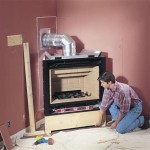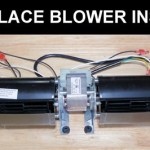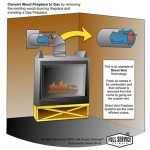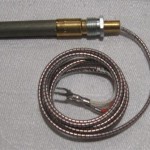Understanding Fireplace Cast Iron Backplates: Function, Selection, and Maintenance
Fireplaces, historically and contemporarily, serve as focal points within homes, providing warmth and aesthetic appeal. A critical, often overlooked, component of a traditional fireplace is the cast iron backplate. This seemingly simple element plays a vital role in the functionality, safety, and longevity of the fireplace structure. This article will delve into the purpose, selection criteria, installation considerations, and maintenance requirements associated with fireplace cast iron backplates.
A cast iron backplate is a protective shield positioned at the rear of the fireplace firebox. It is typically a solid piece of cast iron, although designs vary in size, shape, and decorative details. The primary function of the backplate is to protect the masonry or brickwork behind the fire from direct exposure to the intense heat of the fire. Without a backplate, the repeated thermal cycling of the brickwork – expansion and contraction due to temperature fluctuations – can lead to cracking, spalling (the chipping or flaking of the brick surface), and ultimately, structural degradation of the chimney. This can result in costly repairs and potentially hazardous conditions.
Beyond protection, the cast iron backplate also contributes to the fireplace's heating efficiency. Cast iron is an excellent conductor and radiator of heat. The backplate absorbs heat from the fire and slowly radiates it back into the room, increasing the overall warmth provided by the fireplace. This radiant heat offers a more consistent and comfortable heat source compared to solely relying on convective heat, which rises rapidly and can create uneven temperature distribution within the space. Furthermore, the even distribution of heat imparted by the backplate helps to prevent hotspots from developing on the fireplace's rear wall that could lead to structural problems.
Selecting the Right Cast Iron Backplate: Size, Material, and Design
Choosing the appropriate cast iron backplate is essential for optimal performance and safety. Several factors should be considered during the selection process. The most critical is the size of the backplate. The backplate should cover the majority of the rear wall of the firebox, extending slightly beyond the typical boundaries of the fire. It should not be so large, however, that it interferes with proper airflow or restricts the placement of logs. Precise measurements of the firebox are therefore crucial before purchasing a backplate. A backplate that is too small will leave vulnerable areas exposed to direct heat, while one that is too large can hinder combustion and reduce efficiency.
The material composition is another important consideration. While most fireplace backplates are made of cast iron, the specific grade and quality of the iron can vary. Higher-quality cast iron will be more resistant to cracking and warping under extreme heat. It is advisable to opt for backplates made from durable, high-grade cast iron designed specifically for fireplace applications. Checking manufacturer specifications and reviews can help determine the quality of the cast iron used in a particular backplate.
The design of the backplate is a matter of personal preference, but it can also impact performance. Backplates are available in a variety of styles, from plain and functional to highly ornate and decorative. Some backplates feature raised patterns or designs that are intended to increase the surface area for heat radiation. While decorative elements can enhance the aesthetic appeal of the fireplace, it's important to ensure that they do not compromise the backplate's primary function of protecting the firebox wall. Additionally, if the intent is to boost radiant heat output, researching backplates with designs specifically intended for this purpose is advised.
Installation Considerations for Fireplace Backplates
Proper installation of the cast iron backplate is crucial for ensuring its effectiveness and longevity. While some homeowners may attempt a DIY installation, it is generally recommended that a qualified fireplace professional handle the task. Improper installation can lead to a variety of problems, including inadequate protection of the firebox wall, improper airflow, and even structural instability.
The installation process typically involves cleaning the rear wall of the firebox to remove any debris or loose mortar. The backplate is then positioned against the wall, ensuring that it is properly centered and aligned. In some cases, the backplate may be secured using high-temperature mortar or specialized fasteners to prevent it from shifting or falling. It's crucial to use materials specifically designed for fireplace applications, as standard mortar or adhesives may not withstand the extreme heat.
Before installing the backplate, it is essential to inspect the chimney and firebox for any existing damage. Cracks, gaps, or loose bricks should be repaired before the backplate is installed. Installing a backplate over existing damage will only mask the problem and potentially exacerbate it over time. Addressing any underlying structural issues will ensure that the backplate provides optimal protection and extends the lifespan of the fireplace.
Maintaining Fireplace Cast Iron Backplates: Cleaning and Inspection
Proper maintenance is essential for preserving the integrity and performance of a cast iron backplate. Regular cleaning and inspection can help prevent corrosion, identify potential problems early on, and extend the lifespan of the backplate.
Cleaning the backplate should be a part of the regular fireplace maintenance routine. Soot and creosote can accumulate on the backplate over time, reducing its heat-radiating efficiency and potentially contributing to corrosion. The backplate can be cleaned using a wire brush, a scraper, or a specialized fireplace cleaning solution. It is important to use caution when cleaning the backplate to avoid scratching or damaging the surface. Wearing gloves and eye protection is recommended, as soot and creosote can be irritating to the skin and eyes. The fireplace should be cool when cleaning to prevent burns.
Regular inspections are equally important. The backplate should be inspected periodically for signs of cracking, warping, or corrosion. Any cracks or damage should be addressed promptly to prevent them from worsening. Small cracks may be repaired using high-temperature mortar or sealant, while larger cracks may require replacement of the backplate. Corrosion can be mitigated by applying a thin coat of high-temperature paint or sealant to the backplate. This will help protect the iron from moisture and other corrosive elements.
It is also important to ensure that the backplate is properly sealed against the firebox walls. Gaps or cracks in the sealing material can allow hot gases to escape, reducing efficiency and potentially damaging the surrounding masonry. The sealing material should be inspected regularly and replaced as needed. Using high-temperature mortar or sealant specifically designed for fireplace applications will ensure a durable and effective seal.
Furthermore, the type of fuel burned in the fireplace can impact the lifespan of the backplate. Burning green or unseasoned wood can produce more creosote and moisture, which can accelerate corrosion. Using dry, seasoned wood will help reduce creosote buildup and prolong the life of the backplate. Also, avoid burning treated wood, as the chemicals they contain can be corrosive and damaging to the backplate and the chimney.
By understanding the function, selection, installation, and maintenance of fireplace cast iron backplates, homeowners can ensure the safety, efficiency, and longevity of their fireplaces. Regular attention to this often-overlooked component will contribute to a warm and enjoyable fireplace experience for years to come.

Solid Cast Iron Fire Back Plate Savvysurf Co

Firebacks 500 Charles Nijman Fireplace Antiques

Cast Iron Bedroom Fireplace Insert Twentieth Century Fireplaces

Replacement Cast Iron Firebrick Fireplaces

Small Cast Iron Fire Back Slot In Savvysurf Co

Firebacks 500 Charles Nijman Fireplace Antiques

Aspen Cast Iron Plate Fireplace Back Panel Kildare Stoves

All About Firebacks Pennsylvania Hamburg 19526 Fireplace Safe T Boot Supports

Which Fireplace Accessories Do I Need Charles Nijman

Firebacks 500 Charles Nijman Fireplace Antiques
Related Posts








